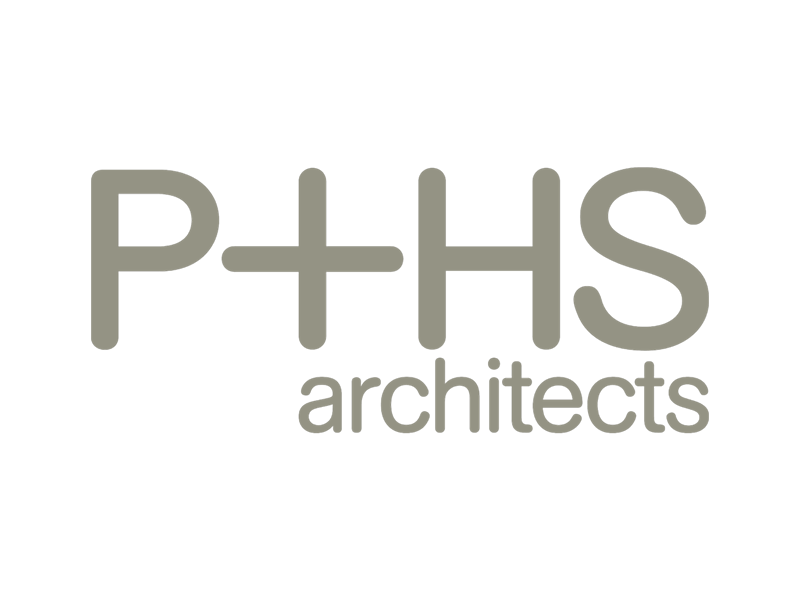The Product Class for 2014 was organised to reflect the current marketplace, with a key focus on achieving financial and carbon efficiencies and meeting government targets. Here are details of this year's winners.
Best Product for Improving Working Practices
The judges considered:
- Liverpool Heart and Chest Hospital improves patient care with EMC solution
- Unify - Birmingham Children’s Hospital improves clinical decision-making for paediatric intensive care
- NHS Supply Chain for eDC Gold – a key solution for NHS customers
- Imerja's Video as a Service technology
- Dell and Locala for Enabling Mobile Workforce
- TeleTracking Technologies
Winner:
TeleTracking Technologies
TeleTracking’s suite of solutions addresses virtually every point along the patient flow pathway, from admission to discharge, creating an enterprise-wide platform.
This automates a hospital’s functional operations and powers live information to the entire enterprise via easy-to-read, graphics-rich digital dashboards that provide executives, managers, and bed co-ordinators with a motion picture of patient, staff and asset locations and interactions, bed capacity, hand hygiene compliance, and critical workflow data.
TeleTracking's solutions improve patient safety, patient throughput, reduce overcrowding, cut costs, generate revenue, fight the spread of infection, manage assets, accelerate patient transfers, and provide a wealth of data for continual operational improvement.
Currently in the UK, TeleTracking’s advanced logistical efficiency solutions are active or under implementation at 27 hospitals, including The Royal Wolverhampton NHS Trust and The University Hospital Southampton NHS Foundation Trust.
At The Royal Wolverhampton NHS Trust, TeleTracking’s automated hand hygiene sensor technology has reached a milestone of over 1.3 million hand hygiene observations per month. This compares to just 600 visual observations over the same time period. The TeleTracking system also tracks the role of every badged staff member who comes in contact with an infected patient.
The trust’s programme manager, Clare Nash, said: “It’s a pioneering technological system and the biggest of its kind in any hospital in the world.”
Cheryl Etches, chief nurse, added: “I now have access to so much information about patient safety and experience issues. The potential this system offers is phenomenal and can fundamentally underpin the operating framework of our organisation.”
Choosing it as their winner, the judges said it had ‘tremendously wide appeal’.
Highly commended:
NHS Supply Chain for eDC Gold – a key solution for NHS customers
NHS Supply Chain is working with trusts and investing in technology to bring value to the NHS, enabling trusts to support their savings challenge. The latest result is eDC Gold.
“When it comes to the stock taking issue, it is the bane of our lives,” said Jackie Nixon-Coaton, theatre lead for orthopaedics at Mid-Cheshire Hospitals NHS Foundation Trust.
“The problems with the old system are it’s not real-time, it’s not ‘up-to-date’, and it isn’t always accurate.”
With an estimated £1billion of the NHS budget attributed to consigned and high-value stock, NHS Supply Chain recognised that managing this cost effectively within specialist surgical areas, such as orthopaedics and cardiology, brings complex and widespread challenges for trusts. Such challenges can affect a trust’s ability to deliver against its strategic objectives, be time consuming and potentially far more costly than it needs to be.
In response to these challenges NHS Supply Chain developed the unique and cost-efficient inventory management solution, eDC Gold, to bring greater visibility and control to the management of high-value consigned stock in specialist surgical areas.
eDC Gold was developed on NHS Supply Chain’s eDC demand management system, which is already used by the majority of NHS trusts and is primarily focused on low value/high volume products. eDC Gold introduces the additional inventory management functionality required for product categories, such as orthopaedics, which require an enhanced level of inventory management.
eDC Gold not only tracks stock levels, but stock movements as well, telling the trust where stock is, where it has been used, which products are owned and which are consignment. This enables consumption by location to be better understood.
The results from the pilots have been impressive. £5,000 a month was saved through reduced stock obsolescence, equating to 9% of managed spend. In addition, clinical time spent on stock management reduced by 74% and product call processes by 92%.
The Department of Health’s eProcurement Strategy, launched in May, referenced the benefits of eDC Gold in the drive for data transparency in the NHS.
Unify - Birmingham Children’s Hospital improves clinical decision-making for paediatric intensive care
Birmingham Children’s Hospital implemented Unify’s OpenScape Xpert system, a new bespoke touchscreen telephone conferencing system, in order to streamline the referral and decision-making process for critically-ill children.
It is the first time that the OpenScape Xpert solution, which has been two years in production, has been deployed within the healthcare sector in Europe.
OpenScape Xpert has been installed in the main hub of the Kids Intensive Care and Decision Support (KIDS) service at the hospital. KIDS provides urgently-needed assistance to clinicians in hospitals across the West Midlands who are treating critically-ill babies, children and young people.
Around 1,600 children a year are referred to the KIDS’s 24/7 hotline, which are immediately assessed, managed and triaged by the KIDS consultant in conjunction with other specialists. The Unified Communications (UC) Xpert station improves unplanned emergency conference call management by making the handling of multiple emergency calls more efficient. The Xpert system also facilitates efficient transport team dispatch and support, which is vital to improving the delivery of timely solutions to children.
Phil Wilson, KIDS lead nurse at Birmingham Children’s Hospital, said: “The additional flexibility and utility of this system allows users to be transferred between calls, to leave and rejoin, and allows the KIDS operator to create and deconstruct conferences while still holding individual personnel on the console. This allows expert medical staff and other key personnel to be manoeuvred into and out of whichever call they are needed, so that discussions can take place simultaneously.”
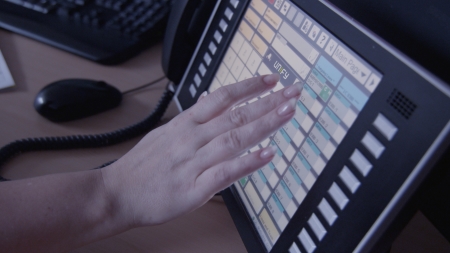
Unify is helping Birmingham Children’s Hospital to improve clinical decision-making for paediatric intensive care
Best Product for Financial Efficiencies
The judges considered:
- P+HS Architects, Erimus and Keiro for The Gateway
- Buro Happold – Intelligent use of space using an evidence-based approach
- Betts Environmental provides storage and recycling services for used X-ray film
- Kwickscreen for Kwicksreen
Winner:
Betts Environmental provides storage and recycling services for used X-ray film
Highly commended:
P+HS Architects, Erimus and Keiro for The Gateway
Dubbed ‘the future of neuro rehabilitation’, The Gateway will reduce the long-term cost to the state while enhancing patient outcomes.
The Gateway is the first of Keiro’s new designs as part of a unified rehabilitation model set to roll out across the UK over the next five years.
With the NHS under pressure to save billions of pounds by 2015, research published this year by The Office of Health Economics stated that private rehabilitation facilities such as The Gateway could save the NHS approximately £120m – enough to pay for 5,000 newly-qualified nurses.
The Gateway was developed from day one to complement the NHS in terms of facilitating quicker discharge from hospital, offering bespoke rehabilitation, and easing clients back into the community.
The onsite transitional housing that The Gateway provides is one of the key differences from other facilities elsewhere in the UK, providing clients who are ready to move on from the centre with an independent living facility adapted to suit their needs and with close access to the centre and its therapists and care workers.
“The Gateway is living and breathing proof that a private and public healthcare partnership can save the public purse and improve patient outcomes,” said Alistair McDonald of Keiro.
The judges said of the entry: “This is a really good idea. We particularly like the multi-tasking and co-location of services.”
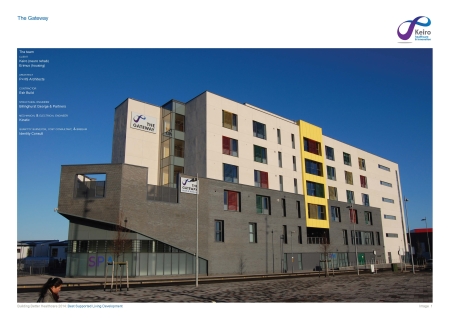
P+HS Architects, Erimus and Keiro were highly commended in the category of Best Product for Financial Efficiencies
Buro Happold – Intelligent use of space using an evidence-based approach
The Royal United Hospital is undergoing major changes to provide a new therapies and cancer unit.
Part of the new works will require rehousing a number of outpatient departments from buildings that are being demolished.
With build costs at around £2,500 per square metre, and running costs at £210 per square metre, nobody can afford to build more than necessary or get the designs wrong.
The trust is therefore keen to maximise the utilisation of its estate and minimise the need for new build projects by accommodating displaced departments within the remainder of the existing site.
Buro Happold’s team undertook an extensive space utilisation exercise across the outpatient departments to identify opportunities to use space more effectively and thus minimise the need for new building. The survey used sophisticated video analytics to reveal a major variation in space utilisation and patient experience.
Optioneering of the department layouts involved sophisticated modelling techniques mapping the movements and activities within each area. The results highlighted opportunities to significantly improve space utilisation within the hospital. Buro Happold is now working with the trust and its architects to inform decisions regarding merging departments through the use of dynamic modelling.
“Use of evidence-based predictive modelling and optioneering techniques is helping the hospital to achieve savings of over £3m by intelligent relocation and merging of low-utilisation outpatient departments,” said a spokesman for Buro Happold.
Howard Jones, the hospital’s director of estates and facilities, added: “Buro Happold’s Smart Space methodology provided the objective tool to confirm how underutilised our spaces were. We believe this pioneering work should pave the way for major capital projects and estate strategies across the NHS.”
The BBH judges said: “This is a clever system and the results are very promising.”
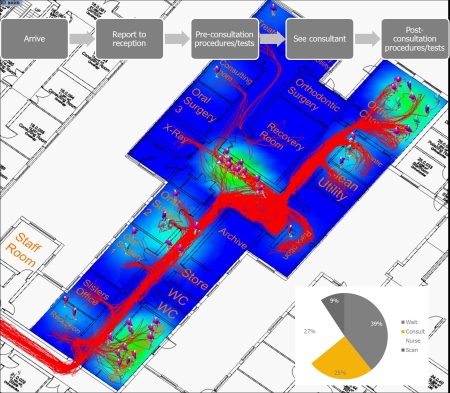
Buro Happold was praised for its evidence-based approach to design
Best Product for Enhancing Infection Prevention
The judges considered:
- Teal Stop n’Wash
- DiscreteHeat EasyClean LST - The future of healthcare heating
- Brandon Medical - Quasar eLite operating lights
- Multishower GB for Medi-Shower
- Silentia Screens
- Sentra Medical for the SureWash system
Winner:
Multishower GB for Medi-Shower
Medi-Shower is a complete anti-microbial system designed specifically for healthcare facilities, which includes a showerhead, a hose, colour-coded inserts representing each quarter, a quarterly control chart, and colour-coded maintenance keys for changing inserts.
Designed and manufactured in the UK, it was developed in conjunction with experts in the field of Legionella control in order to offer solutions to the problems associated with traditional shower heads currently in use in the vast majority of worldwide healthcare facilities.
The Medi-Shower shower head is made of two parts - the handle and a small insert at the water exit point. The inserts are changed quarterly and are colour coded with a corresponding colour-coded chart placed beside each shower cubicle. In this way cleaning regimes and the quarterly replacement of inserts can be easily monitored by both the cleaning company and the healthcare facility.
Medi-Shower operates using a small and unique insert, Quattro Spray. This is replaced every quarter, and the previous insert recycled. This offers a much more sustainable alternative to standard shower heads, which are often removed to landfill sites after short lifespans.
Medi-Shower uses Multishower spray technology. Due to the spray outlet design, bio-film simply passes through the shower head as part of a regular flushing regime. It also has a much smaller internal surface area than normal shower heads. This has been proven to provide less area for biofilm, limescale or bacteria to develop.
Medi-Shower employs Biomaster silver ion bug-busting technology and the Quattro Spray insert is much less expensive to replace than an entire standard showerhead. In addition, fewer chemicals are required in the cleaning process and inserts can be replaced in seconds, saving many man hours in maintenance and cleaning.
The BBH judges said: “This is a good idea and a clever design, particularly the replacement central head. It is cost effective and very useful in a health or care setting.”

Medi-Shower won the award for Best Product for Enhancing Infection Prevention
Highly commended:
Brandon Medical - Quasar eLite operating lights
Quasar eLite is a new LED operating theatre light that has been designed and built in Britain by a consortium of the UK’s finest surgeons, engineers and infection control specialists.
The outcome is a radical improvement in the performance of both surgical lighting and medical video systems. The results are enhanced light distribution, fully-integrated HD-SDI video cameras, and world-class hygienic design principles, improving performance of operating theatres for surgeons, theatre staff and infection control.
Using funding from the European Commission, NHS staff at Bradford Royal Infirmary have worked with engineers from Brandon Medical and scientists from TWI and Sagentia in a two-year collaborative research programme to develop improved infection controlled surgical lighting and AV integration.
The consortium worked together from conception of the surgical light, through trials and testing stages until the product was ready for market launch. With medial AV now at the heart of the modern digital operating room, Brandon Medical has paid particular attention to video integration in the design of the new light.
Quasar eLite is the first operating theatre light which incorporates full SDI High Definition cameras and zoom controls, which are fully embedded within the slim lamp head. The system eliminates the expensive electronics and loss of signal quality normally associated with transmission through the rotating joints of an operating room light to produce an outstanding picture quality on large monitors. Quasar eLite has also been designed to minimise infections and adheres to world-class hygienic design principles.
The HD-LED lighting technology provides the surgeon with accurate full-colour representation of anatomical structures during procedures. The colour temperature adjustable light makes all colours vivid and vibrant, making it easy to distinguish small differences in tissue.
The BBH judges said: “Combining high-definition video with brilliant surgical lighting technology wrapped into infection control design is a winner.”
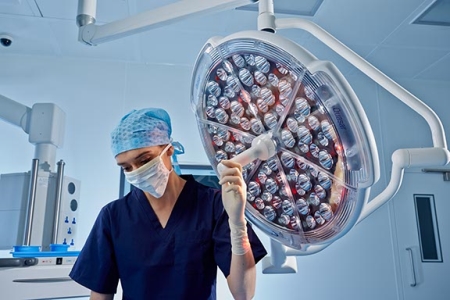
Brandon Medical was highly commended for its Quasar eLite operating lights
Best Product for Improving Sustainability and/or Reducing Energy
The judges considered:
- Solar Photovoltaics - The Princess Alexandra Hospital NHS Trust
- Philips Electronics for lighting transformation project at the Royal United Hospital Bath
- Medical Air Technology - ECO-flow green
- Colchester Hospital University NHS Foundation Trust – Heat recovery and condensate return system
- Sharpsmart for Epsom and St Helier
- Nottingham Healthcare NHS Trust
Winner:
Colchester Hospital University NHS Foundation Trust – Heat recovery and condensate return system
Since topping the first CRC table in 2011, the estates team at The Colchester Hospital University NHS Foundation Trust has been working to further increase efficiency and reduce costs and carbon emissions at its sites in Essex.
The Heat Recovery and Condensate Return System from Colchester Hospital University NHS Foundation Trust works by drawing off the waste gases from the hospital’s boilers instead of letting it escape up the chimney. These gases are then put through a unique heat recovery technology that condenses them, releasing all the available energy within them. This means that, instead of exhausting to atmosphere at 180°C, which creates a visible plume of wasted energy at the boiler house, the hospital can use all the energy and exhaust at 30°C instead.
This energy is used to heat 20m3 of water for heating, and 1.5m3 of water for boiler make up, every hour of every day. This, in turn, means the boilers have to do less to keep the same amount of hot water flowing around the hospital, so the amount of gas used drops.
With the condensate return system, new steam traps were installed that ensure no costly live steam passes through. In contrast, the traps that have been used historically in the NHS require small amounts of steam to pass through in order to trap the rest.
By switching to this new trap on all distribution lines and processes, the hospital produces the same amount of hot water while reducing steam consumption by 11%.
The projects will reduce trust-wide CO2 emissions by 974 tonnes per year, which is an 8% reduction on 2010/2011 levels.
The savings, which equate to over £200,000, will be reinvested back into improving the patient environment.
The judges said: “This is a clear winner. It shows proven effectiveness and clever procurement for what is a very innovative system. There are good installation results and clear, precise financial effects.”

Thermal Energy International won the category for its heat recovery and condensate return system
Highly commended:
Philips Electronics for lighting transformation project at the Royal United Hospital Bath
Upgrading to LED lighting at the Royal United Hospital Bath has transformed the appearance and ambience of internal spaces while delivering significant energy, cost and carbon savings.
The project, carried out in partnership with Philips, got the go-ahead after the trust successfully bid for £1.6m from the Department of Health’s Energy Efficient Capital Funding initiative.
Working closely with the RUH, Philips delivered a total lighting solution across the hospital including clinical areas, corridors, reception spaces and entire wards.
Philips surveyed approximately 85% of the 90,000sq m estate to evaluate the existing lighting and identify the most-appropriate LED solutions and the potential savings.
The installations occurred on live wards, greatly reducing the level of disruption to the hospital.
The lighting meets CIBSE criteria and all new luminaires are easy to clean, with no fly traps or reflective surfaces when switched off.
The engagement of hospital staff and senior management played a key role in the success of the upgrade.
Howard Jones, director of estates and facilities, said: “The project has been transformational in changing the way people perceive the hospital.
“The funding came about initially as part of a drive towards greater energy efficiency, but we have seen many other benefits for staff, patients and visitors. It has made the hospital feel lighter and brighter, it looks cleaner, and people are generally a lot happier with the environment.”
Carbon emissions will be reduced by 2,700 tonnes a year and savings of up to five million kWh per year, or £400,000 in running costs, are expected.
The judges said: “This is a nice scheme. The effect is very good and the savings are strong. It really has made a huge difference.”
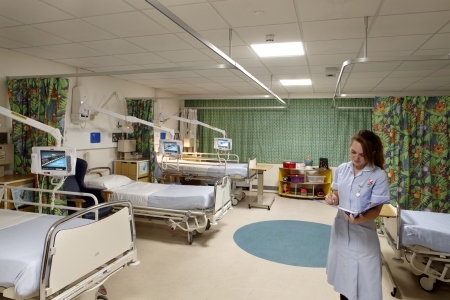
Philips Electronics was highly commended for its lighting transformation project at the Royal United Hospital Bath
Best Product for Improving Privacy and Dignity
The judges considered:
- Britplas – Safevent Security Fencing with mesh art
- Silentia - Sights and Sounds privacy screens
- KwickScreen – KwickScreen B15
Winner:
Britplas – Safevent Security Fencing with mesh art
Safevent Security Fencing is an innovative perimeter security system that allows the use of digital images - art, landscapes, photos, and graphics - to enhance the patient experience by creating an aesthetically-pleasing and calming environment, all within a safe, enclosed area.
The product was initially developed, without art, to enhance the privacy, dignity, safety and security of mental health patients in outside areas and incorporates a perforated mesh cloaking system that is strong, anti-ligature, anti-climb and prevents the passing of contraband.
The clever design of the fencing, and its associated mesh, allows patients to view the outside world while making it difficult for passers-by to observe the enclosed area.
After attending a Design in Mental Health Network seminar about incorporating art within a building’s design in order to improve the therapeutic environment, Britplas began to look into ways of incorporating art into its fencing system.
Following an extensive research and development process, it has developed a remarkable solution that allows detailed digital images to be baked onto the fence’s powder coating.
“A patient’s perception of perimeter security is that of an obvious custodial boundary, something unmistakably institutional and a constant reminder that they are living in a secure environment,” said Britplas’s Laura Graham. “We realised that by adding art to our fencing we could soften the physical appearance of the fence while significantly enhancing the patient environment.”
Any image deemed appropriate can be used and, if necessary for the benefit of the local community, images can also be applied to the outside of the fence.
The BBH judges said: “This product shows how industry and healthcare providers can work together to design innovations that will have a truly positive effect on patient wellbeing.”
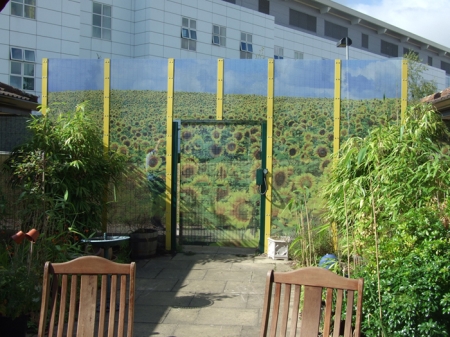
Britplas won Best Product for Improving Privacy and Dignity for its Safevent Security Fencing with mesh art
Highly commended:
KwickScreen – KwickScreen B15
Mixed-sex accommodation breaches are distressing for patients and cause numerous problems across the NHS estate, with potential penalties of thousands of pounds in fines being incurred monthly, which the majority of trusts cannot afford to pay.
The KwickScreen B15 provides a cost-effective, patient-focused and innovative solution. It is the result of two years of research and development conducted after the launch of early prototypes in 2010.
The screen provides a robust and uninterrupted 1.9m-high partition that can be extended in seconds to any length up to 3.5m. It benefits from a sturdy, stable construction, with a smoother mode of operation and a more-streamlined and easy-to-clean design than previous versions.
In line with patient and hospital staff feedback, the B15 model has been designed to be taller, with a lower ground clearance, to provide a more-substantial wall structure for increased privacy on the wards. It can easily be transported for use in different locations and has a small footprint when rolled up - requiring minimal storage space.
KwickScreen works like a temporary curtain, but acts like a temporary wall, and can also be bent to create a corner at any point along its length for added flexibility in creating private patient areas.
The screen can be printed with a variety of images or information, which can be changed without difficulty due to its zip-in design. The screens could clearly display the gender of the ward that you are about to enter, or that a clinical procedure is taking place. They are easy and inexpensive to clean, with the newly-added antimicrobial castors, ensuring that hygiene standards are maintained on wards.
The KwickScreen B15 has been developed specifically to help screen patients by creating single-sex, separate sleeping areas within multi-bedded wards and allows for the easy reconfiguration of spaces at short notice.
Where KwickScreens have been used in this application, on average 75 breaches a week are prevented, thus saving just under £1m annually.

Kwickscreen was highly commended in the category of Best Product for Improving Privacy and Dignity
Best Product for Improving the Patient Experience
The judges considered:
- Safehinge for Symphony - the ultimate door safety system for mental health
- Teal Furniture – The Buddy day bed/attendance chair
- The Rooflight Company
Winners:
Safehinge for Symphony - the ultimate door safety system for mental health
Symphony is the first door system for the mental health market that meets every safety requirement.
A number of additional design features enhance the service user experience, resulting in a positive impact on recovery rates, which also cuts costs for NHS trusts in the long run. The four main requirements for the sector are that products are anti-ligature, anti-barricade, fire rated, and durable.
Previously, the main problem with door hinging systems was the conflict between the anti-ligature and fire-rated requirements, with door closers presenting pronounced ligature points.
Estate managers were forced to remove door closers completely, compromising the safety of service users and staff. This derogation from building regulations essentially meant that estate managers had to choose between one life-critical health and safety issue- suicide risk - and another - fire risk.
Symphony is the first door system to eliminate this compromise, while meeting all the other requirements.
The system includes a pivot hinge system that reduces ligature risk and allows the door to be opened outwards if needed; a door closer fitted in the head of the door frame with no connecting arms or ligature points; a built-in doorstop that can be removed by staff for outwards opening; and seals that minimise light leakage, helping to reduce sleep disruption.
The new design also significantly improves acoustics and minimal visible fixings and a warm timber finish help to create a deinstitutionalised aesthetic.
Each doorset can be rapidly installed or replaced within two hours. This makes Symphony ideal for live wards, minimising disruption by eliminating the need to decant service users.
Martin Germaney, estates manager at When Birmingham and Solihull Mental Health NHS Foundation Trust, said: “Symphony’s aesthetics have helped to create a less-institutional environment which the service users are enjoying. The safety features are working well and the doors have sustained a recent attack with no damage.”
The judges said the entry ‘ticked all the right boxes’.
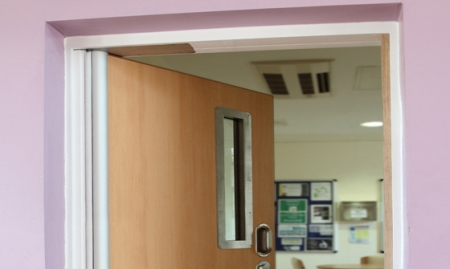
Symphony from Safehinge won Best Product for Improving the Patient Experience
Teal Furniture – The Buddy day bed/attendance chair
Buddy is the latest addition to Teal’s specialist seating collection. Designed for maternity or paediatric areas, Buddy is an attendance chair that transforms easily into a daybed.
Operation of the Buddy daybed is simple. The storage base unit can be pulled out using the integral flap. The seat pad can then be flipped over and operation of a discretely-located button mechanism on the rear of the arm allows Buddy to transform from an attendance chair into a comfortable daybed. The back can be lowered in any increment to suit the user – from upright to a 180-degree horizontal fully-reclined position.
Used as an attendance chair In the upright position Buddy features a high, supportive back for added comfort and extends to a 2m bed length with generous internal width to accommodate the majority of users. It has been designed with an overall width of 870mm, allowing it to fit through a hospital doorway for ease of transportation.
The stylish, contemporary design features a one-piece arm, which minimises the number of seams over high contact areas, helping to aid infection control.
Two storage bowls are located in the pull-out front, ideal for storage of pillows, blankets or personal effects.
The upper section of the bed has been carefully designed to ensure a fully-open head area, which allows visibility from side to side and avoids the user feeling ‘enclosed’.
Teal also offers a comprehensive selection of healthcare fabrics from market-leading manufacturers to meet the specific demands of durability, aesthetics and infection control.
In line with infection control protocol, Buddy is available in a variety of fabrics compatible with commonly-used hospital cleaning systems including a 5% Sodium Hypochlorite solution, Haz Tabs or Chlor Clean.
The beds are already used at New Cross Hospital and Gloucestershire Royal Hospital.
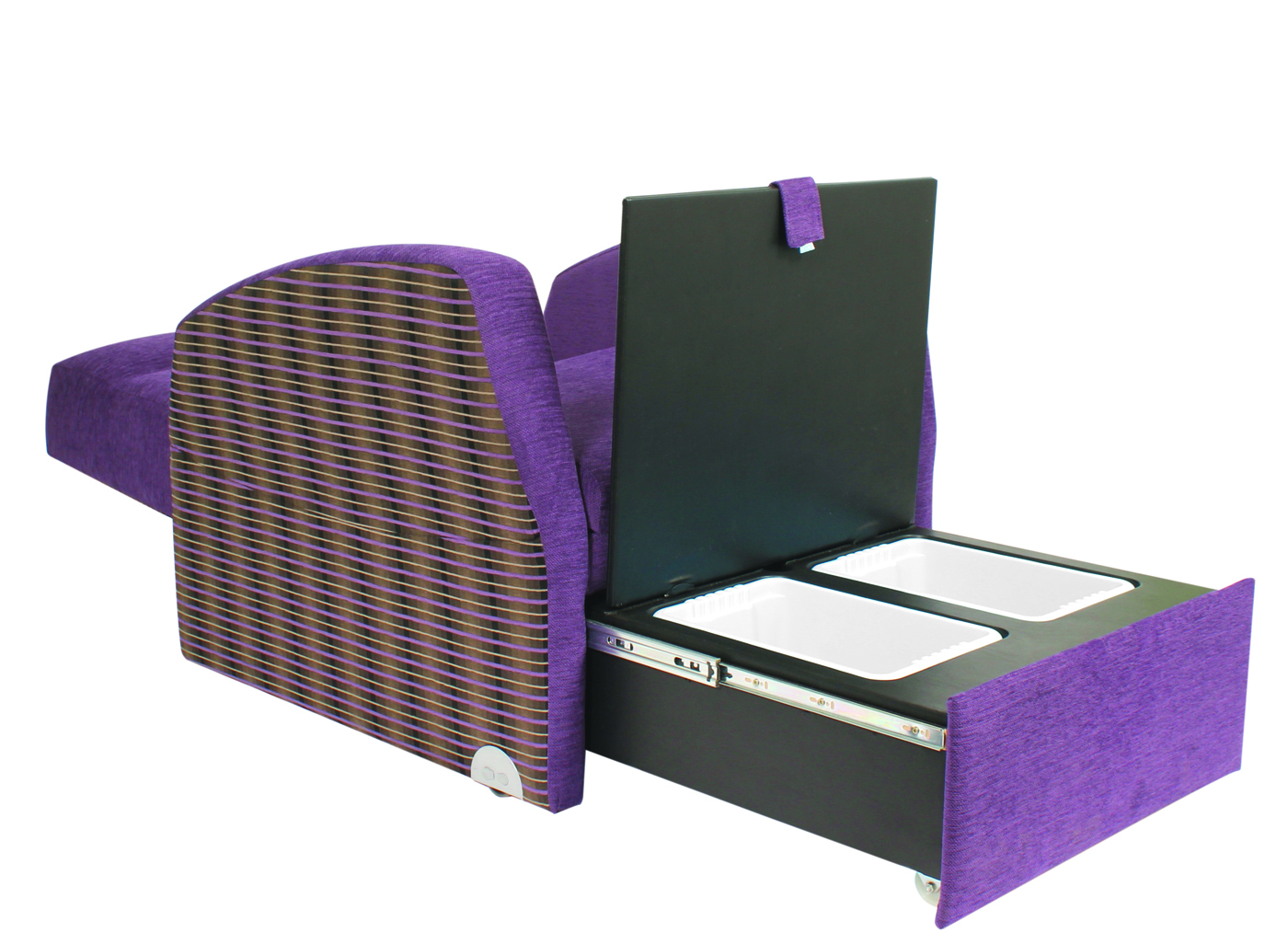
Teal Furniture was one of the winners for its Buddy day bed/attendance chair
Best Product for Improving Patient Outcomes
The judges considered:
- EMIS Group – Digital Healthcare for OptoMize Advanced Ophthalmology
- The Health and Social Care Institute at Teesside University for the Pain Garden
Winner:
EMIS for OptoMize Advanced Ophthalmology
OptoMize Advanced Ophthalmology highlights and helps clinicians manage patients at high risk of deteriorating sight due to diabetes.
The software simplifies the task for Public Health Diabetic Eye Screening Programmes of managing high-risk patients where potentially sight-threating retinopathy has been detected. This ensures patients can be tracked once referred to the Hospital Eye Services.
In high-priority cases patients need to be followed up within a matter of weeks otherwise they risk losing their sight completely. OptoMize Advanced Ophthalmology provides a digital way to carry out this follow-up which otherwise has to be done manually.
In November 2013, the Oxfordshire Diabetic Eye Screening Programme began using the Advanced Ophthalmology module within OptoMize. Immediately staff could see every new patient referral with potentially sight-threatening retinopathy and how much time had passed since the referral. Given the urgency of new referrals, this functionality allowed the service to follow up each referral rapidly, ensuring each patient had received an appointment, track those who had subsequently been seen, and contact those who had not attended their appointment.
As the Advanced Ophthalmology module is an optional part of OptoMize, the benefits of the software can be replicated throughout the UK. OptoMize is already used in 80% of diabetic eye screening services in England.
The BBH judges said: “This is a wonderful piece of software as it helps clinicians to manage patients better.”
Highly commended:
The Health and Social Care Institute at Teesside University for the Pain Garden
The Pain Garden is a joint design venture between Professor Denis Martin and Dr Alasdair MacSween from the Health and Social Care Institute at Teesside University; and Middlesbrough-based design company, Animmersion UK.
Using funding from Arthritis Research UK, The Pain Garden is an online graphical representation of the experience of chronic pain. It uses the idea of garden as a metaphor to explain that pain affects people on different levels which are separate but linked together.
People understand that a garden is made up of separate elements that link together. The Pain Garden tries to put this idea across about pain.
When accessing the website, visitors complete a short online questionnaire. Each response creates an element in the Pain Garden, for example plants are sensory, trees are emotional and waterlife denotes wellbeing. Clicking on an element provides more information about what it means. The responses also create a star in a night sky. This sits alongside stars from others who have completed the ‘game’.
A small-scale evaluation explored what users and clinicians thought about The Pain Garden.
Seventeen adults, each of whom had chronic pain linked with osteoarthritis or rheumatoid arthritis or chronic widespread pain, completed an online survey after two weeks of access to The Pain Garden website. They gave their opinions about how useful the site was for them and for other people with chronic pain. Six pain management clinicians were also interviewed.
The main issues of value were The Pain Garden's presentation of the emotional and wellbeing aspects of pain; reassurance that their experience is normal for someone with chronic pain and that they are not alone. There was particular agreement that The Pain Garden would be most useful for someone initially trying to come to terms with living with pain.
The judges said: “This is a quirky idea, but lovely.”

The Health and Social Care Institute at Teesside University was praised for developing the Pain Garden






